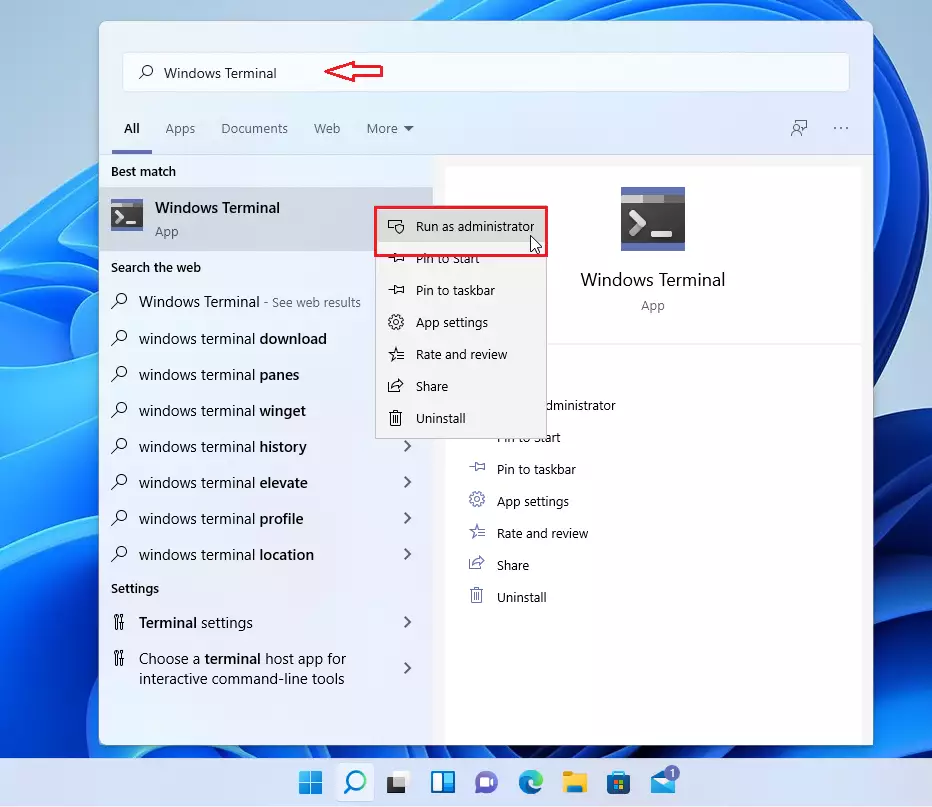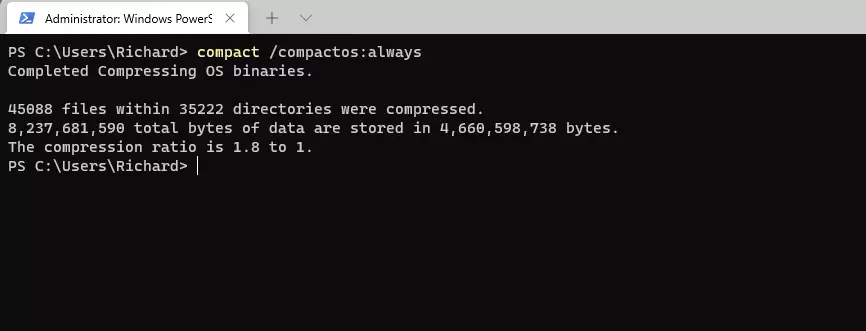This post shows students and new users how to turn Compact OS on or off with Windows 11.
Windows has tools and features that help you save disk space and optimize your Windows OS image. In addition, with Compact OS, you can run the operating system from compressed files.
In most cases, Windows 11 will be installed on a system with more than enough resources to run optimally. However, if you want to run Windows on a low-end device, you may want to shrink and optimize Windows 11 images to run with fewer resources.
In Compact mode, Windows installs the operating system files as compressed files. Then, it updates and replaces individual files to help maintain the drive’s footprint size over time.
Compact OS is supported on both UEFI-based and BIOS-based devices.
Below is how to turn Compact OS on or off with Windows 11.
How to enable Compact OS with Windows 11
As mentioned above, Compact OS allows Windows to be installed on low-end devices without the resources to run Windows normally.
Compact OS shrinks and optimizes Windows 11 images by removing individual files as needed to help maintain the drive footprint size over time.
To enable Compact OS, open Windows Terminal as administrator.

Then, run the commands below to enable compressed Windows files.
compact /compactos:always
After running the commands above, you’ll see Windows compressing the OS binaries. Depending on your system’s speed and hard drive size, this could take a while. Wait until the process is complete, and you can see a message like the one below.

To query Compact OS status, run the commands below.
compact /compactos:query
Windows will display whether the system is in a compact state or not.

You can now close the Windows Terminal.
How to disable Compact OS in Windows 11
If Compact OS is enabled and you want to turn it off, open Windows Terminal and run the commands below.
compact /compactos:never
Windows will run and begin decompressing the system binaries. Once done, you’ll see a message that the systems’ files are uncompressed.
That should do it!
Conclusion:
- Compact OS is useful for optimizing Windows 11 performance on low-end devices.
- Enabling Compact OS helps save disk space while allowing the OS to function normally.
- To turn Compact OS on, use the command
compact /compactos:alwaysin Windows Terminal. - To disable it, simply use the command
compact /compactos:never. - Regularly checking the status of Compact OS can help maintain an efficient system.
- Remember that compressing and decompressing files may take some time, depending on your hardware.

Leave a Reply